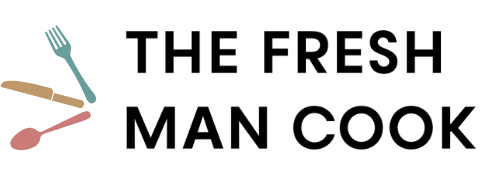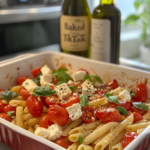Step into the world of homemade pasta, where flour, eggs, and a dash of creativity transform into silky strands of deliciousness. Making pasta from scratch is not just a culinary endeavor; it’s a journey of discovery, a dance between tradition and innovation. As you mix, knead, and roll out your dough, you’re not just making a meal but creating a masterpiece. So, don your apron, dust your countertop with flour, and embark on this pasta-making adventure together!

Homemade Pasta Recipe
Equipment
- 1 Saucepan
- 1 Mixing bowls
- 1 Rolling Pin
- 1 Pasta Machine
- Baking sheets
Ingredients
- 2 1/2 cups Italian-style “00” flour 318 grams, or unbleached all-purpose flour (310 grams), measured correctly
- 1 tsp fine sea salt
- 4 large eggs
- 1 Tbsp extra virgin olive oil
- Semolina flour for dusting the baking sheet and cut noodles.
Instructions
- Create a well in the center of the flour in the big bowl, add the water and salt, and stir with a fork to combine. Transfer the dough to a flat surface and gently knead it for three to five minutes, or until it forms a compact ball. If the dough is too dry, add a tablespoon at a time of water.
- Allow the dough to rest for half an hour by covering it with a tea towel or plastic wrap.

- Roll out the dough on a lightly floured board after kneading it a few times. Roll to a thickness of about 1/8 inch, roll up, and slice to form fettuccine, or to make squares to put in soup, or to make it thicker or thinner.
- Simmer in salted water until boiling, about 7–9 minutes. Have fun!
Notes
Nutritional Value per Serving
Nutrition
- Serving: 1
- Calories: 287cal
- Carbohydrates: 47g
- Protein: 11g
- Fat: 5g
- Saturated Fat: 1g
- Cholesterol: 123mg
- Sodium: 339mg
- Sugar: 1g
- Fiber: 2g
- Calcium: 28mg
- Iron: 3mg
What Is the Best Flour for Homemade Pasta?
Selmolina flour is my top choice for making delicious pasta at home. 00 flour is a good second place. Don’t give up just yet because you don’t have either of those types of flour on hand. You can still make homemade pasta with all-purpose flour, bread flour, or whole wheat flour. All of them will get you fresh pasta, but they will all do it in slightly different ways.

Can I Make Fresh Pasta without Eggs?
Yes, you can make fresh pasta without eggs by leaving out the eggs in the recipe below and adding about 1 to 1 ¼ cups of room-temperature water instead. While pasta dough from whole eggs is more common in Northern Italy, pasta dough made from just semolina and water is more common in parts of Southern Italy.
In these areas, egg whites are often used more than whole eggs in the recipe below. Different parts of the world have their favorite pasta shapes and dough, and I’m not saying that my method is authentic in any way. Because that’s what I’ve found to work best!





